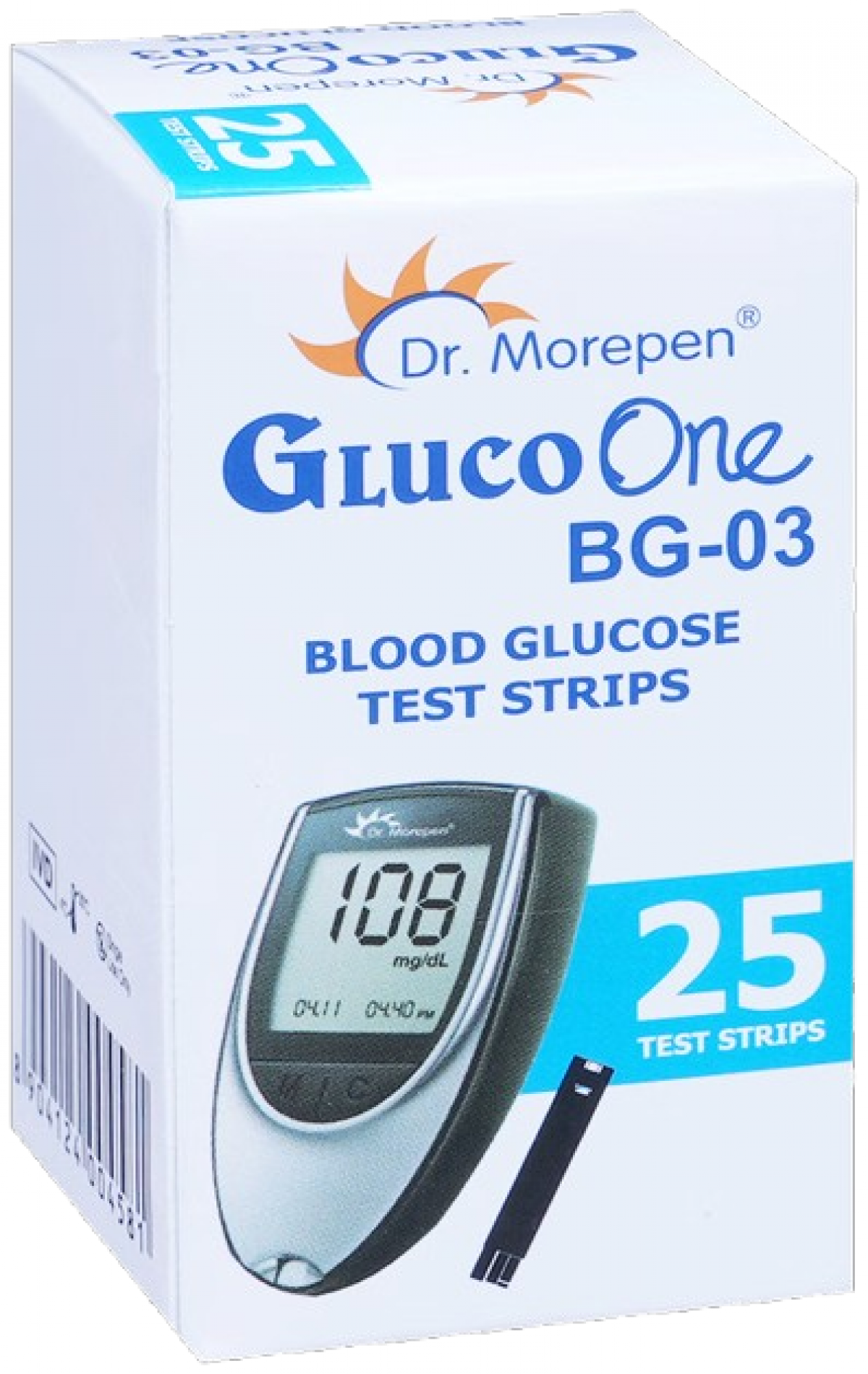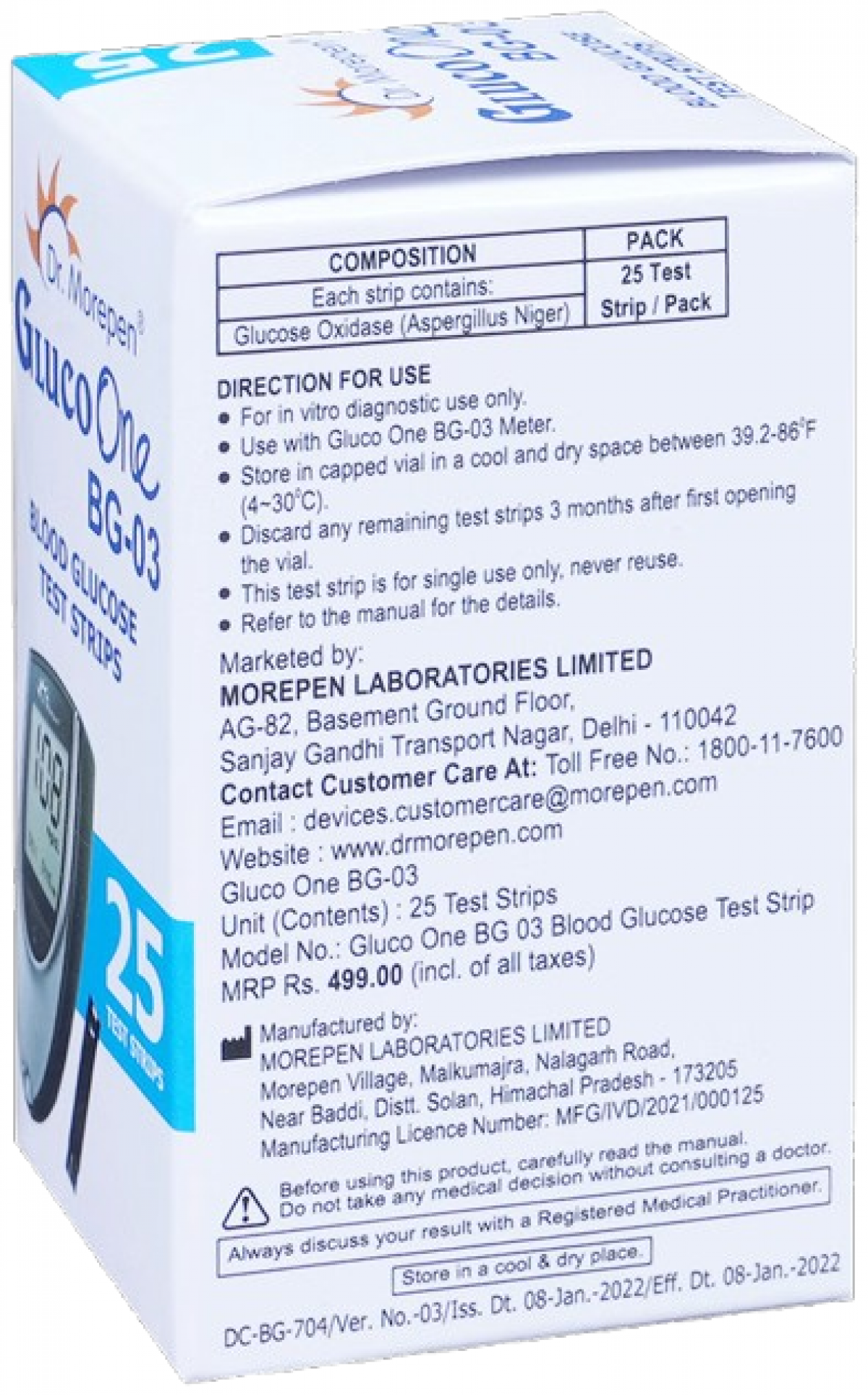Dr Morepen Gluco One BG 03 Blood Glucose 25 Test Strip
Manufacturer Morepen Laboratories Ltd
₹ 499.00
Inclusive of all taxes
Package SIZE
1 Pack of 25 Strips
100% Authentic
Products
Free
Shipping*
Products
Return Policy
Description:
These test strips are used to determine the levels of glucose in the blood. It is a dependable and convenient self-testing method that use a blood glucose monitor. It helps to deliver rapid and dependable results from the convenience of your own home. It is suitable for both professional (clinics) and personal (home) use. It is easy to use.
Product Specifications and Features:
- Product Dimensions: 3.7 x 3.6 x 6.4 cm; 26 gm
- Content: Test strips, no glucometer device, strips in a box intended for single, one-time use
- Minimum blood sample needed: 0.5 microlitres
- Provides information on how the program affects the blood glucose level
- It helps to test blood glucose frequently, which in turn allows for keeping blood sugar levels in control
- Requires only a tiny drop of blood for the test
- It helps monitor glucose levels at any time and anywhere
- It can be used to keep a regular tab on the sugar levels at home
Compatible with: Gluco One BG-03 glucose meter
- Expert advice:
- Store in a cool and dry place. Keep away from direct heat and sunlight. Each strip is for single use only. Keep out of the reach and sight of the children. Dispose of the used strips properly.
- How to use:
- The first step is to wash your hands with soap and water, pat dry it with a towel. You can also use an alcohol swab to clean your finger before testing but ensure the fingertip is completely dry before you test. Remove the diabetes test strip from the box of strips. Insert it into the slot on the glucometer just before you prick your finger. Next, use a clean lancet (a device that holds the needle) or insert a clean needle in the lancet, which can help you to prick the end of your finger. Prick the side of your fingertip and wait till blood oozes out. Wipe off the first drop gently and then put a drop or two onto the designated place on a test strip attached to the glucometer. Hold a clean cotton pad or gauze on the prick site to stop blood flow. Apply pressure on the area of the insertion until the bleeding stops. Your blood glucose level will appear on the meter’s display. Note down your readings as it helps you to monitor your glucose levels from time to time. Repeat this procedure every time you test your blood glucose level.
- How it works:
- Helps to measure blood glucose level Provides you with information on how your treatment program affects your blood glucose level Helps to test blood glucose frequently which in turn allows you to keep your diabetes in control Requires only a tiny drop of blood for the test Helps you to monitor glucose level at any time and anywhere Can be used to keep a regular tab on your sugar levels at your home
- Faq for medicine:
- Q. Can blood sugar strips be reused? No. All the blood glucose test strips are for single use only. Do not ever reuse a test strip as it may not provide you with the appropriate results. It is strongly advised to always discard a test strip after every use. Q. What are the benefits of glucometers? It is well known that testing blood glucose levels with a glucometer at home is one of the best ways to manage diabetes. It can help you to test your blood glucose at any time of the day and anywhere. Using a portable glucometer is the best way to test glucose when traveling. Charting of blood glucose levels becomes easy with glucometers especially with devices having memory options to store previous readings. By helping you to keep your blood glucose level in check, blood glucose monitors can help you manage diabetes better. Q. What is a normal glucometer reading? According to the American Diabetes Association, the fasting or preprandial blood glucose levels for diabetics should be between 80 – 130 mg/dl and postprandial (1-2 hours after meals) should be less than 180 mg/dl. However, the range mentioned in your glucose monitor may be a little different. So, you need to speak to your doctor to calibrate the results with your lab reports.


